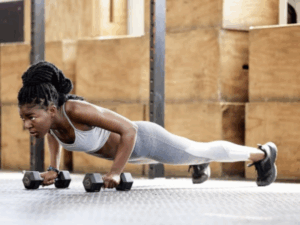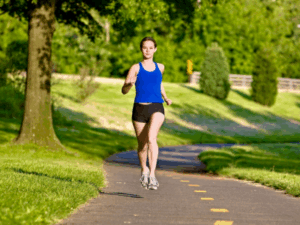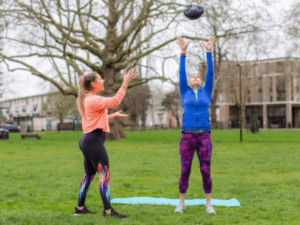As the colder months approach, many people swap their outdoor fitness routines for the warmth and comfort of indoor gyms. However, training outside during the winter offers a unique set of benefits for both your physical and mental health. The crisp air, beautiful surroundings, and the feeling of accomplishment after a chilly workout can be invigorating. We want you to understand why exercising outside during the colder months can actually be great for you, and to encourage you along, we’ve got some handy tips from our very own KBPT trainers to help you stay safe, warm, and motivated all the way through winter!
Why Train Outside in the Cold?
1. Boosts Your Immune System
Exercising outdoors in colder temperatures can strengthen your immune system by exposing your body to mild stressors that help build resilience. Cold weather encourages your body to work harder to regulate its temperature, which can enhance cardiovascular fitness and endurance. Plus, staying active in the winter can reduce your risk of catching colds and other seasonal illnesses by keeping your immune system strong.
2. Burns More Calories
Cold weather forces your body to expend more energy to keep warm, which can increase your metabolism and help burn more calories during your workouts. Training outside in the cold requires your body to work harder to maintain its core temperature, making your exercise sessions more effective, especially for fat loss.
3. Improves Mental Health
Training outside in nature can do wonders for your mental health. Spending time outdoors, especially in green spaces, has been linked to reduced stress, anxiety, and depression. Exposure to natural light, even on cloudy days, can help balance your circadian rhythm and combat Seasonal Affective Disorder (SAD). Exercise itself is a natural mood booster, thanks to the release of endorphins, but doing it outdoors can amplify those effects, improving your overall well-being.
4. Fresh Air and Vitamin D
Getting outside ensures you receive fresh air, which is essential for mental clarity and energy. Even in the winter, sunlight exposure helps your body produce Vitamin D, which is vital for bone health, immune function, and mood regulation. Staying cooped up indoors can lead to feelings of fatigue, irritability, and even a weakened immune system due to lack of fresh air and sunlight.
The Dangers of Staying Indoors All Day
While it’s tempting to stay cozy at home during the winter months, too much time indoors can have negative effects on both your physical and mental health. Prolonged indoor living can lead to:
- Poor air quality, which can contribute to fatigue, headaches, and respiratory issues.
- Reduced physical activity, which can lower your metabolism, increase the risk of weight gain, and contribute to muscle stiffness.
- Increased stress and anxiety, as limited exposure to daylight can disrupt your sleep cycle, mood, and mental clarity.
- Social isolation, which can worsen feelings of loneliness and depression, especially when paired with limited daylight hours.
Getting outside, even for a short walk or a quick workout, can break this cycle and refresh both body and mind.
Tips for Training Outside in the Cold
To enjoy the benefits of outdoor training during the winter, it’s essential to dress appropriately and plan ahead. Here are some key tips for staying comfortable and safe while working out in the cold:
1. Layer Up Wisely
Dressing in layers is crucial for maintaining body heat without overheating. Start with a moisture-wicking base layer to keep sweat off your skin, followed by an insulating layer (like a fleece or thermal), and finish with a windproof and waterproof outer layer. This way, you can adjust your layers as you warm up during your workout.
2. Invest in Quality Footwear
Cold weather can make outdoor surfaces slippery, especially with rain or frost. Choose shoes with good traction and support to prevent slipping. Waterproof shoes can also help keep your feet dry and warm. Make sure your footwear is appropriate for the type of terrain you’ll be exercising on.
3. Protect Extremities
Your hands, ears, and feet are more vulnerable to the cold, so make sure to wear gloves, a thermal hat or headband, and thick socks. Keeping these areas warm will help you feel more comfortable throughout your workout.
4. Stay Hydrated
It’s easy to forget to drink water in colder weather, but hydration is just as important in winter as in summer. Cold air can be dehydrating, especially when you’re working out. Bring a water bottle and make sure to hydrate before, during, and after your session.
5. Warm Up and Cool Down
Cold weather makes muscles tighter, increasing the risk of injury. Always take the time to warm up before your workout with dynamic stretches or light cardio to increase your heart rate and get your blood flowing. Post-workout, cool down with stretching to help your body recover properly.
Best Parks in East London for Outdoor Training
If you live in East London, you’re lucky to have access to a variety of beautiful parks that are perfect for outdoor workouts. Here are a few of the top spots to get your sweat on this winter:
1. Victoria Park (Hackney)
Victoria Park is one of East London’s largest and most popular green spaces. With wide-open paths, outdoor gym equipment, and plenty of scenic running routes around the lakes and gardens, it’s a fantastic spot for both casual joggers and fitness enthusiasts.
2. Mile End Park (Tower Hamlets)
Located along the Regent’s Canal, Mile End Park offers a peaceful environment for outdoor workouts. The park features dedicated exercise areas with gym equipment, and the open spaces are great for personal training.
3. Hackney Marshes
Hackney Marshes is a sprawling green area known for its football pitches, but it also offers wide, open spaces perfect for running, interval training, or personal training. The Marshes are also close to the Lee Valley Park, offering even more room to explore.
For those looking to combine a workout with some local culture, London Fields is the place to go. The park has open fields for training, a track, and even a lido for outdoor swimming. The bustling Broadway Market nearby provides the perfect post-workout treat.
5. Haggerston Park
Haggerston Park is a hidden gem for outdoor fitness. Its peaceful atmosphere, combined with outdoor fitness equipment and grassy areas, makes it ideal for those looking to escape the busier parks while still getting in a good workout or personal training session.
If you want to find out more about the bespoke personal training we offer at KBPT please click here. If you would like to know more about the locations we cover in east London click here or to get in touch click here.












